“December’s Music” — Commentary by Paul Brophy
The author weaves the classic song “White Christmas” into a story about remembering and longing for better days
...December 11th, 2020
The author weaves the classic song “White Christmas” into a story about remembering and longing for better days
...December 11th, 2020
Jerry Jazz Musician is fortunate to have had hundreds of accomplished writers and poets submit their work for consideration of publication during this calendar year. Many thanks to everyone who thinks enough of this website to desire sharing their creative vision with our readers. The works published are outstanding examples of the connections that exist between jazz music, its culture, and the literary arts.
I am proud to report that I have nominated six exceptional published pieces for the prestigious
...December 4th, 2018
On November 21, Universal Pictures will release Green Book, a film directed by Peter Farrelly, and starring Mahershala Ali as African-American pianist Don Shirley, and Viggo Mortensen as “Tony Lip,” a New York bouncer who worked as Shirley’s driver during his 1962 concert tour of the South.
Shirley’s musical style can most easily be described as varied. His cabaret-style jazz playing at times sounds like “Eric Satie meets Erroll Garner,” while his impressive classical work took him to, among others, performances with the Boston Pops Orchestra, the London Philharmonic, and Detroit and Chicago Symphonies. He also composed several symphonies, string quartets, and classical piano pieces. His work caught the attention of Duke Ellington, who hired Shirley to play at his 1955 Carnegie Hall performance. His career featured a long stint with Cadence Records, where, during the 1950’s and 60’s he recorded 16 albums, including 1965’s
...October 9th, 2018
I am always happy to report when a writer published on Jerry Jazz Musician finds success with their work. Michael L. Newell informs me that a new book of his poetry, “Meditation of an Old Man Standing on a Bridge,” is now available from Seattle’s Bellowing Ark Press. This is particularly rewarding as I have proudly published many of the poems Michael has submitted to me since 2015 – two of which appear in this collection.
Michael’s poetry is a gift to those of us who love and appreciate the culture inspired by jazz music. His creative spirit is aligned with those musicians he writes about, maintaining a sensitivity critical to communicating the music’s cultural aesthetic.
Whenever I receive submissions from Michael, I know I will be reading the poetry of a well-traveled man whose work can lead me anywhere – a rainy window in Kigali, a snowy stroll in Tashkent, a Christmas spent alone in Jordan, a puzzling evening in
...September 22nd, 2018
Part 1: Confirmation (1969)
It wouldn’t be the first time my penchant for whistling jazz tunes got me in trouble…nor the last.
I’d been crazy about whistling from my boyhood. Perhaps I inherited my obsession from my late father. He wasn’t a jazz fan like I am, and I barely even remember him whistling—he wasn’t around much when I was a boy and he died when I was twelve—but my mom later told me he was an outstanding whistler. “He could do triple tonguing and everything,” she said.
So maybe it was in my DNA. But at any rate, after his death I determinedly taught myself to whistle. I have a good ear and decent sense of pitch, so I found I could easily get in sync with whatever music I was hearing. And then I practiced and practiced, whistling along with jazz compositions and solos for years until I got
...September 17th, 2018
In a wonderfully entertaining and informative 2004 New Yorker piece titled “Ralph Ellison’s Record Collection,” Richard Brody reminds us of the Invisible Man author’s passion for jazz music — what he referred to as “American music” — and of his somewhat controversial (for the time) opinion of the musicians coming up. While often revering the music of Armstrong, Ellington, and Lester Young (and who can blame him?), of Charlie Parker’s music, he wrote “there is in it a great deal of loneliness, self-deprecation and self-pity,” and, in a letter to friend Albert Murray following a 1958 Newport Jazz Festival performance, described Miles Davis as “poor, evil, lost little Miles Davis.” He famously characterized bebop as “a listener’s music” that “few people are capable of dancing to it” — although this critique was probably more of a lament of a lost culture.
But the crux of the story is not Ellison’s opinion about music, rather the recordings he collected, reported by Brody as
...September 12th, 2018
Mac’s Restaurant and Nightclub in Eugene, Oregon is where the blues aficionados in Central Oregon congregate to enjoy Cajun type bar food and dance joyously to pounding, power guitar driven blues. Our friends Alan and Susan go there a couple times a month to satisfy their boogie dance cravings. Whenever my wife and I pass through Eugene, we end up at Mac’s with Alan and Susan. They also attend a lot of blues festivals around their neck of the woods and can be considered connoisseurs.
I too love the blues. I also love jazz. Susan loves the blues. She does not love jazz, “modern” jazz to be specific. Susan explains that when she’s dancing at Mac’s, she feels the pounding bass and drums and screaming vocalist and Fender Stratocaster vibrating her bones and muscles and eyeballs. That’s her heaven. That’s how she wants to
...September 3rd, 2018
The late, great trumpeter Clark Terry once offered one of the most pointed, and humorous, comments about the perennial controversies in jazz over race and the perceived abilities of white versus black musicians…
He said, “My theory is that a note doesn’t give a
...August 16th, 2018
As someone who both adores the best qualities that jazz has to offer, and abhors our current national politics of polarization, I’m often struck by how the two realms of jazz and politics so dramatically conflict, in their respective expressions of two great American inventions.
It’s not supposed to be like that, though, because jazz and democracy, theoretically at least, share so many core principles.
Jazz, I believe, contains the best of democratic values. In jazz, everyone has a ‘voice’ and a
...August 1st, 2018
From a small balcony above the stage of the Maybeck Recital Hall in Berkeley, I’m looking down on the jazz duo of bassist Red Mitchell and pianist Roger Kellaway, while tapping my foot to the earthy, swinging beat they are laying down.
It’s a Sunday afternoon in 1992 at this unique venue. The recital hall is part of a house originally built by the famed architect Bernard Maybeck in the early twentieth century. (Maybeck designed the Palace of Fine Arts in San Francisco, along with many other notable buildings in that city.) The hall accommodates only about 50 people, and it’s a warm, redwood-paneled room with beautiful leaded glass windows on three sides. It actually feels a lot like being in a little chapel—but the religion being worshipped here is that of acoustic jazz, primarily of the pianistic variety.
For several years now, ‘The Maybeck’ as it’s familiarly called, has hosted a who’s-who of
...July 5th, 2018
In a 2016 Business Insider post, the physicist Stephon Alexander – author of The Jazz of Physics: The Secret Link Between Music and the Structure of the Universe – writes about the connections between John Coltrane, described by Alexander as a “musical innovator, with physics at his fingertips,” and Albert Einstein, who “was an innovator in physics, with music at his fingertips.”
Coltrane’s music, particularly his final three records, helped Alexander realize that improvisation is a characteristic of both music and physics. “Much like Einstein working with his thought experiments, some jazz improvisers construct
...July 2nd, 2018
I’m driving up Raymond Boulevard toward downtown Newark. In the darkness the huge lighted sign atop the Public Service Electric & Gas Company serves as a beacon for approaching the city. Yet tonight something is off with the sign, and I laugh out loud as I see that its ‘L’ has burned out…and that it is now offering ‘PUBIC SERVICE’ to the community!
I am on my way to work at radio station WHBI where I am a staff announcer but also produce a nightly jazz show. On the car seat next to me is my
...May 21st, 2018
The “record” business continues to make an impressive comeback. Although actual record sales make up a small fraction of the $8.7 billion music industry, according to Nielsen, the 14.32 million records sold in 2017 was up 9% over the previous year, and the Lp format accounted for 14% of all physical album sales.
This resurgence is evident in my city, Portland, where many neighborhoods are anchored by restaurants and coffee shops spinning record albums, and often include
...May 17th, 2018
In a March 29 post on Slate, Fred Kaplan writes about the newly released bootleg recording of Miles Davis’ quintet (featuring John Coltrane), The Final Tour, a four-CD box set of live concerts in Europe from 1960. The tour happened a year after the release of Kind of Blue, so many of the tunes played during it is from that classic album. According the Kaplan, the music found on this Columbia/Legacy set is “radically different” and such a “jarring departure” from the album that “it demands we revise the conventional wisdom about these two musicians (Miles and Coltrane) and fills in some blanks…in the story of jazz, and where it was going, in those pivotal years.”
Kaplan’s essay includes a critique of the music itself – but of particular interest is his reminder of the
...April 1st, 2018
For those with the time (and a strong nostalgic gene), you may enjoy viewing the 90-minute performance of a 1965 benefit entitled The Rat Pack Captured. This benefit – billed originally as a “Frank Sinatra Spectacular” benefiting “Father Dismas Clark’s Halfway House for Excons” – took place in St. Louis and was broadcast via closed circuit television in theaters all over the country. (Father Charles Dismas Clark was known around the country as “The Hoodlum Priest,” and his ministry included the successful rehabilitation of felons).
A youthful Johnny Carson hosts (in place of an ailing Joey Bishop who, Carson jokes, “slipped a disc backing out of Frank’s presence”), Dean Martin is at his
...February 20th, 2018
I could make the argument that jazz being marketed as a “popular music” officially died on January 12, 1975. Why? Because that was the date of the last Super Bowl halftime show that featured jazz music, in this case a “Tribute to Duke Ellington” performed by the Grambling State University Marching Band and Mercer Ellington. Sure, in subsequent years there was the occasional Pete Fountain/Al Hirt exhibition to pump local tourism when the game was held in New Orleans, but Madison Avenue officially ended all attempts at presenting jazz to a mass audience at the conclusion of the halftime show for the ’75 Steelers/Vikings game. What followed was an era of musical malaise for
...February 4th, 2018
While the romantic notion is to imagine that the music coming out of the clubs lining New York’s 52nd Street during the 1940’s was universally applauded, we of course know that is not the case. In an example of this dissent, consider the words of Los Angeleno Norman Granz, who told Downbeat this during his April, 1945 visit to New York:
“Jazz in New York stinks! Even the drummers on 52nd St. sound like Dizzy Gillespie!”
“I can’t tell you how disappointed I am in the quality of music here. We keep getting great reports out west about the renaissance of jazz along 52nd St. but I’d like to know where it is. Literally, there isn’t one trumpet player in any of the clubs with the exception of ‘Lips’ Page and he was blowing a mellophone the night I caught him. Maybe Gillespie was great but the ‘advanced’ group that Charlie Parker is fronting at the Three Deuces doesn’t
...January 30th, 2018
An uncredited piece in the January 11, 2018 edition of AL.com titled “The Night Nat Cole was Beaten on a Birmingham Stage” recounts the April 10, 1956 evening in Birmingham, Alabama, in which Nat Cole was attacked on stage by local members of the Ku Klux Klan. It is not only an example of our not-so-distant racist past, but also concerns the complexity concerning Cole’s involvement (or lack thereof) in the civil rights movement. Consider this brief excerpt from the article:
“I can’t understand it,” Cole said of the attack. “I have not taken part in any protests. Nor have I joined an organization fighting segregation. Why should they attack me? I’d just like to forget about the whole thing.”
Roy Wilkins, the executive secretary of NAACP sent Cole a telegram after the attack, “You have not been a crusader or engaged in
...January 27th, 2018
It was the kind of New York night not fit for man nor beast. Sleet and wind whipping about, snow banks and ice everywhere. With my ‘49 Dodge slipping and sliding on the Village streets, I make my way to the Vanguard to catch the midnight set. The small sign outside the entrance inconspicuously announces: “Bill Evans Trio.” This is the 1962 edition of the trio, reformed after bassist Scott LaFaro’s death the year before; and this is the club where Bill had played his last sets with
...January 25th, 2018
As Time.com’s Billy Perrigo reminds us in his excellent December 22 piece “How the U.S. Used Jazz as a Cold War Secret Weapon,” the U.S. State Department “hoped that showcasing popular American music around the globe would not only introduce audiences to American culture, but also win them over as ideological allies in the cold war,” and that jazz, in particular the music of Armstrong, Gillespie and Brubeck could help “keep communism at bay by whatever means possible.”
The history Perrigo brings up is itself well-traveled, having been explored in depth by several writers, notably
...December 24th, 2017
After you indulge on Thanksgiving, consider giving Duke Ellington’s “simply steak” diet a try! In his 1973 autobiography Music is My Mistress, from a chapter titled “The Taste Buds,” Duke Ellington writes about his special diet, losing thirty pounds while on it, and the resulting onstage antics.
__________
In 1955 my doctor, Arthur Logan, told me I would have to take off twenty-two pounds. I tore up his suggested menu and made one of my own. Mine was simply steak (any amount), grapefruit, and black coffee with a slice of lemon first squeezed and then dropped into it. With the exception of a binge one day a week, I ate as much of this
...November 23rd, 2017
He could only play
when he had the heart and hope
that a bit of heaven
would persist in his deliverance,
a warmth that resembled
those long summer afternoons
where the sun flowed
upon a crown of greens
beneath an ever present
September 11th, 2017
In this August, 2016 27, 2016 Detroit Free Press piece by Mark Stryker, Ron Carter – the most recorded bass player in the history of jazz – talks about the ten favorite recordings he appeared on during his distinguished career…
_____
Saying the Detroit-bred bassist Ron Carter has made a lot of recordings is like saying American swimmer Michael Phelps, the most decorated Olympic athlete of all time, has won a lot of medals.
Carter, who was born in Ferndale and graduated from Cass Tech, has more than 2,221 recording credits to his name. According to the Guinness World Records, he is the most
...June 20th, 2017
Do you remember growing up and always running into that one kid that just could do it all? Or at least did something better than you that you just wished you could do? It could have been art, sports, holding his breath under water – whatever it was it seemed it was a natural gift for him, like he was born with it. Who didn’t wish he or she was “born with it”?
During my childhood, I was always told I was special. Sure we all hear that growing up, and each one of us believes it. No one could make a bed as well as you, no one could
...April 24th, 2017
Tomorrow is opening day of the 2017 baseball season. The first day of major league baseball always provokes simultaneous thoughts of renewal and nostalgia – the return of sunshine (at last!) and an optimistic spirit is coupled with the thoughts of days gone by, when the likes of Mays and Mantle and Aaron roamed the outfield and Ellington and Armstrong and Miles set the rhythm of our culture.
Baseball and jazz are well connected, as theorized by trombonist Alan Ferber, who wrote that “baseball players and jazz musicians both strive for a perfect balance between disciplined practice and spontaneity.” They also shared the spotlight in popular culture, when
...April 1st, 2017
Many thanks to Doug Ramsey, honored jazz journalist and publisher of the blog Rifftides, who during his visit to Portland to cover the PDX Jazz Festival, took the time to meet with me and learn about the “Jazz in the Schools” program we instituted at PDX Jazz. You can read his report and get information about the program by clicking here.
...February 22nd, 2017
In the late 1950’s, the photographer W. Eugene Smith happened to be Manhattan neighbors with musicians Dick Cary and Hall Overton, who used their apartment as a gathering place for the great jazz artists of the era. In this small apartment space, Smith catalogued the lives of the likes of Thelonious Monk, Bill Evans, Rahsaan Roland Kirk and Lee Konitz in 4,000 hours of recordings and 40,000 photographs. Among the most noteworthy is a recording of Monk and Hall Overton as they rehearse for their famous 1959 Town Hall recording.
The ongoing effort preserving this work known as “The Jazz Loft Project” includes the musical recordings and photos as well as conversations among the
...January 19th, 2017
Yesterday’s Travel section in the New York Times was led by a fabulous feature by Sloane Crosley, “Exploring the France that Josephine Baker Loved,” which described her world while living in the Chateau des Milandes — the castle overlooking the Dordogne in the Périgord region in which she raised her 12 adopted children. Crosley’s piece is a tantalizing invitation to visit a beautiful region of the world, while reminding us of the complexity of her career and life in France.
...July 18th, 2016
During the 1950’s and 60’s, when Louis Armstrong was one of the most famous people in the world, his opinions were often reported on, and would at times ruffle feathers on both sides of a political argument.
I recently came across an April 27, 1960 newspaper article that was published at a time when Armstrong was caught between 1) advocating for his country (while on tour as the country’s “jazz ambassador”) and 2) for his fellow African-American countrymen in the midst of the struggle for civil rights.
Titled “Satchmo Silent on Racial Crisis,” (from an unknown source but catalogued in the Armstrong file at the Institute of Jazz Studies at Rutgers University) this excerpt – transcribed at the time by the reporter in a
...June 15th, 2016
In a brilliant piece titled “Universal Consciousness: The Spiritual Awakening of Alice Coltrane,” Britt Robson writes that “the closer one examines the genuinely phenomenal life, music and spirit of Alice Coltrane, the more inevitable it seems that she will also someday receive her proper due. The most striking aspect of her biography is that she became a master musician and a spiritual guru in the same way, by carrying forth all her accumulated wisdom in a welcoming synthesis, rather than shedding, judging and discriminating her way to ‘growth’ and ‘maturity.'”
This extensive biography focuses on Alice’s musical path, her marriage to John Coltrane, her ensuing spiritual awakening, and her influence on
...May 23rd, 2016
The other day, while stumbling around the Internet, I came across the first official Playboy interview — that of Alex Haley’s 1962 conversation with Miles Davis. The interview was published in the September edition and was considered quite controversial at the time. Consider this comment from the interview, and keep in mind what the world was like in 1962, and the shock it may have caused in certain segments of our society: “In high school I was best in music class on the trumpet, but the prizes went to the boys with blue eyes. I made up my mind to outdo anybody white on my horn.”
Now 54 years later, in the context of today’s world the interview doesn’t seem as controversial, but it remains a significant window to the soul of the era’s most revered
...April 22nd, 2016
The revival of the landmark all-black Broadway musical “Shuffle Along” – originally produced in 1921 and opening at New York’s Music Box Theatre on April 28 – reminds us of the great Noble Sissle/Eubie Blake compositions (most famously “Love Will Find a Way” and “I’m Just Wild About Harry”), but also the challenges (and humiliation) performers, theater owners and audiences faced within a racist American society. “’Shuffle’ wasn’t exactly forward thinking on race,” John Jeremiah Sullivan writes in a recent New York Times feature titled “American Shuffle.” “It broke boundaries, no doubt, but mainly through its success, and by having great pop tunes. Otherwise, it was a blacks-in-blackface production.”
“An area in which the show genuinely pushed things forward,” Sullivan writes, “[was] romance.” This during a time when white America found black sexuality
...April 11th, 2016
In a just recorded podcast, two of this era’s most accomplished jazz writers — the New York Times’ Ben Ratliff and Nate Chinen — discuss the two first-run biopics now out on Miles Davis and Chet Baker, the ingenious trumpeters who each experienced great drama in their professional careers and personal lives, most obviously their chemical dependency and great personal charisma. You can hear the journalists discuss
...April 8th, 2016
In an opinion piece titled “Hollywood’s Fake Version of Nina Simone,” the New York Times’ Brent Staples takes on the decision to cast Zoe Saldana as Ms. Simone in the upcoming film Nina. The casting controversy involves whether or not Ms. Saldana’s skin is dark enough, especially considering that, as Staples writes, “Ms. Simone’s embrace of her blackness was essential to both her art and who she was as a person, and that any number of talented
...March 21st, 2016
So many great songs to choose from for marking Valentine’s Day…The standard that most immediately comes to mind is an obvious choice, Richard Rodgers and Lorenz Hart’s “My Funny Valentine.” Written for their 1937 Broadway musical Babes in Arms, the piece was overshadowed on Broadway (and in the film version starring Mickey Rooney and Judy Garland) by “Where or When,” “I Wish I Were in Love Again,” and “The Lady is a Tramp,” and was not made relevant until Frank Sinatra’s recording of it in 1953. It was eventually recorded by more than 600 artists on countless albums, and became synonymous with Chet Baker, who recorded it over 100 times. Will Friedwald, author of Stardust Melodies: The Biography of Twelve of America’s Most Popular Songs — an entertaining and essential work of popular music history — wrote that “the tune could be said to follow Baker from the grave, since it’s usually included in memorial tributes to him.”
Friedwald writes, “What makes the whole [song] so remarkable is the happy/sad nature of the lyric, brilliantly mirroring the major/minor nature of the music. It’s a love song, but far from those ‘I love you and everything’s rosy’ tunes so popular in the twenties (vis-a-vis Iriving Berlin’s ‘Blue Skies’). It’s vaguely optimistic, but it couldn’t
...February 14th, 2016
In a recent University of California, San Francisco study involving jazz pianists, according to the public release document associated with the research, neuroscientists have concluded that “the workings of neural circuits associated with creativity are significantly altered when artists are actively attempting to express emotions.”
The public release, entitled “Mind of Blue: Conveying Emotion Affects Brain’s Creativity Network,” reminds us that during the act of improvisation, a brain region known as the dorsolateral prefrontal cortex (DLPFC), which is “involved in planning and monitoring behavior” is deactivated, allowing the musician to enter into a “flow state” that artists enter to
...January 14th, 2016
January 7 marked the 125th birthday of Zora Neale Hurston, a towering literary figure of the Harlem Renaissance whose best known published book is Their Eyes Were Watching God, a 1937 work that Time Magazine lists among the 100 best English-language novels published since 1923. Controversial at one time due to the strength of the black female protagonist’s character (resulting in the book actually being out of print for nearly thirty years), it is now considered essential reading in the study of African-American letters.
In addition to her work as a novelist, Hurston was a folklorist who studied the African-American culture of the rural South. During my 2002 interview with Carla Kaplan, author of Zora Neale Hurston: A Life in Letters, she describes Hurston as a
...January 9th, 2016
Viewers of 60 Minutes this past Sunday were treated to “Little Jazz Man,” a segment devoted to 12-year-old jazz pianist Joey Alexander, whose career is being closely followed by devotees of the music. The two-time Grammy nominee (including Best Jazz Album for his 2015 debut, My Favorite Things) has already performed on the main stages of Jazz at Lincoln Center and the Newport Jazz Festival, and has been described by Wynton Marsalis as “my hero.”
Is he the best pianist in the world? Not a chance. Not now. But with the appropriate
...January 8th, 2016
For fans of what was once the record business, the Colin Hanks film All Things Must Pass — which chronicles the history and demise of retailing giant Tower Records — can’t be recommended highly enough. While not a complete or thorough (or necessarily accurate) account of what happened to the chain and record retailing in general, it is a fabulous look inside the head of music retailing’s superstar — owner Russ Solomon. Fiercely loyal to his employees and a close friend to many in the label community, Solomon had one great (and at the time courageous) vision for retailing — marketing records in volume in a storefront devoted to music only. This was at a time when consumers would typically find a limited selection of records in a rack in the local appliance and furniture store.
Solomon’s vision carried his company for over 40 years and through multiple music format changes, but ultimately
...December 16th, 2015
From a recent edition of Slate comes a lovely blog post from Isaac Butler, who rediscovered his passion for jazz after challenging himself to find the fragment of music originally responsible for his interest in jazz. It is a brief, satisfying read…
_____
More than two years ago, as summer changed to fall, I was walking to the gym when I heard, wafting out of the window of a restaurant, a snatch of a jazz song. It was a minor third, descending to the root, first on a trumpet, then on a
...November 23rd, 2015
In the Sunday, June 21 New York Times, Salamishah Tillet writes, “Fifty years after her prominence, Nina Simone is now reaching her peak.” The three new films she has inspired, along with a tribute album and an excellent 2012 biography by Nadine Cahodas, has brought additional importance to Ms. Simone’s music and the way she lived her life, to the point where writers like Tillet opine that Simone “broadened the parameters of the great American pop artist.”
“Simone’s androgynous voice, genre-breaking musicianship and political consciousness may have concerned ’60s and ’70s marketing executives and concert promoters,” Tillet writes, “but those are a huge draw for today’s gay, lesbian, black and female artists who want to
...June 25th, 2015
In addition to co-founding the New York Jazz Quartet, in 1970 this pianist was given knighthood by the President of Liberia in recognition for a series of concerts held to benefit Liberian children. Who is he?
John Lewis
Roland Hanna
Mal Waldron
Tommy Flanagan
Dave McKenna
Randy Weston
Go to the next page for the answer!
...June 9th, 2015
In what is described by New York Times classical music writer Corinna da Fonseca-Wollheim as the company’s “wider shift toward more new music,” on June 5, Opera Philadelphia will present the premier of composer Daniel Schnyder’s “Charlie Parker’s Yardbird,” which stars Lawrence Brownlee as the bebop legend.
According to Fonseca-Wollheim, Opera Philadelphia has “a general willingness to take risks on unorthodox subjects and genres. Philadelphia’s last season featured the American premiere of Ana Sokolovic’s ‘Svadba,’ a raucous Balkan wedding ritual; October will bring a ‘Popera’ about Andy Warhol, mixing elements of cabaret and opera.”
“The mix of musical styles is especially risky in ‘Yardbird,’” Fonseca-Wollheim writes, “since it offers
...June 1st, 2015
I awoke this morning to the sound of a Gene Ammons ballad, “Stella by Starlight.” As a disciple of the sound of Ben Webster and Lester Young, and having been in the forefront – along with Von Freeman — of the “Chicago school,” where a bluesy “expressiveness” was paramount to their style, his music has always moved me. His personal life had its challenges, having been incarcerated on a couple of occasions for narcotics possession, but his sound overcame that, evidenced by the contract he signed with Prestige Records following his 1969 release from prison, which at the time was the largest ever offered by the label.
While some critics questioned the relevance of his style, the pianist
...March 27th, 2015
I finally got around to watching Whiplash over the weekend, accurately described by The Guardian’s Peter Bradshaw as the “Full Metal Jacket of jazz drumming.” Other than being recommended by several friends and casually knowing it involved a young musician attending a music conservatory, I did no research of the film prior to watching and had no expectation for it. I was struck by the brilliance of the performances – both acting and musical – but taken aback by the bizarre, near sadistic relationship between teacher (Terence Fletcher, played by Academy Award winner J.K. Simmons) and student (Andrew Neyman, played by Miles Teller).
It was great, but ultimately dispiriting art. How could anyone who purports to love music as much as Fletcher treat
...March 24th, 2015
Further evidence that life can indeed be very good…I am spending several days in Arizona, attending spring training games. Warm weather, major league baseball, (expensive) beer, (expensive) ballpark grub, good companionship, and the occasional ballpark organist all add up to quality vacation time. I will be in the bleachers for a
...March 7th, 2015
I recall you
dream weaver
I remember you
You’re the one
who makes most dreams
come true
Sir Charles
just not your own
when the sax
ceases dreadfully
heroes fall
trumpets screech
Max Roach calls you
to attention
Sir Charles
listen to Diz
man just don’t fade man!
I hear Lover again
Bird you’re with me
like my mother’s voice
February 26th, 2015
During the Cold War era, America fought back with, among other “weapons,” the Jazz Ambassadors. Led by Louis Armstrong, Dizzy Gillespie, Dave Brubeck, Duke Ellington, Benny Goodman and others, these artists, in the words of Penny Von Eschen, author of Satchmo Blows Up the World: Jazz Ambassadors Play the Cold War, “were cultural translators who inspired the vision and shaped its contours, constituting themselves as international ambassadors by taking on the contradictions of Cold War internationalism.” In a February 23 New York Times piece by Thomas Erdbrink called “Rebirth of the Cool: American Music Makes a Return to Iran,” the effect of a modern day jazz ambassadorship – this one led by saxophonist
...February 24th, 2015
As a Board member of PDX Jazz, the organization that produces the Portland Jazz Festival, I get to do a lot of very cool things. I wrote recently about my opportunity to present a program, “Jazz in the Schools,” to local high school students that combined a short history of jazz with its influence on art, photography, and graphic design.
After seeing classic film of Louis Armstrong and viewing a variety of album and jazz festival photography, art and graphic design, participating photography students went into the Portland community and took original photographs of any subject, person, object or setting that demonstrated their personal vision for jazz. They then collaborated with students from the graphic design class and combined their artistic visions, with each team creating a poster for the Jazz Festival.
The result is 39 outstanding contributions – all created by students who knew little (or nothing) about jazz music, but now do, and who now have an appreciation for its art and history, which is all we can ask for.
The four winning entries (as chosen by a panel of distinguished Board members and artists) are pictured on this page. To see all the entries,
...February 20th, 2015
I could make the argument that jazz being marketed as a “popular music” officially died on January 12, 1975. Why? Because that was the date of the last Super Bowl halftime show that featured jazz music, in this case a “Tribute to Duke Ellington” performed by the Grambling State University Marching Band and Mercer Ellington. Sure, in subsequent years there was the occasional Pete Fountain/Al Hirt exhibition to pump local tourism when the game was held in New Orleans, but Madison Avenue officially ended all attempts at presenting jazz to a mass audience at the conclusion of the halftime show for the ’75 Steelers/Vikings game. What followed was an era of musical malaise for halftime shows (Up With People performed in four of the next 10 shows, for chrissakes!) and then Michael Jackson’s 1993 show opened the eyes of big business to the value of that time, and things were never the same.
Hard to believe, but I found a clip on YouTube of the 1975 halftime show. It is very raw and the sound makes early recordings made in the Gennett Studio sound pristine in comparison, but it is a remarkable piece of history. The introduction by NBC’s veteran (and very square) sports reporter Charlie Jones of the “Tribute to Duke Ellington” is shortly followed by
...January 31st, 2015
I have long felt that students who learn something about jazz music will not only appreciate it as an important American art form, but, once exposed to it will also discover artistic inspiration from it. Fortunately, there are members of the Portland education community who share this view, so on Monday of this week I was privileged to teach a “Short History of Jazz” class to three photography/graphic design classrooms at Portland’s Lincoln High School. This is part of a project — “Jazz in the Schools” — we developed at PDX Jazz, the presenting organization of the Portland Jazz Festival.
After seeing classic film of Louis Armstrong and viewing a variety of
...January 17th, 2015
I spent a few days this week in Las Vegas, attending the Consumer Electronics Show (CES). I have been to about 25 of these shows over the years, and I never cease to be amazed by the enormity of the event — three immense halls and countless hotel lobbies filled with electronics that entertain, think, fly, read, snoop, power and transport. I witnessed people marveling at smart watches, smart belts, smart homes and appliances, robots, drones, driverless cars, curved sound bars and on and on and on…
This year, one of the big deals was a flat screen TV that is thinner than a cell phone. Hard to imagine life without something like that, huh? Products like this attract walls of people around it, snapping picture upon picture, expressing amazement in a variety of languages. Many of these same people were likely here a couple years ago when 3-D was the next “big thing.” That hasn’t worked out so well for either the
...January 10th, 2015
“If you can dance at all, you can dance to [Guy] Lombardo’s music,” the Metronome writer George T. Simon wrote in 1942. The Lombardo band’s popularity was once so immense and widespread that he set attendance marks wherever he went, including at Harlem’s Savoy Ballroom. His appeal came despite what Simon described as the band’s “exaggerated sax vibratos, the clippety brass phrases with their illegitimate tones…and the style of singing that lets you hear all consonants and no vowels,” leading to what some musicians would ridicule as being “about as artistically creative as the average comic book.”
But, as Simon wrote in the chapter on Lombardo from his essential 1967 book The Big Bands, “Lombardo believed implicitly in his music, and he succeeded handsomely in selling it to two generations of dancers.”
For many of us born in the years following World War II – raised culturally by the likes of
...December 30th, 2014
Even as I braced myself for it
It came without warning
But who adheres to
Love’s rules?
It’s like bargaining with the
Devil
Only this devil’s a redhead
And played piano as if
She could connect all the moments
Of the day and turn them into
December 14th, 2014
I am heading to Santa Fe, New Mexico for the weekend, and did some very light “research” about famous jazz musicians who may have hailed from the nation’s 47th state. The most notable is the great trumpeter Bobby Shew, whose impressive resume includes early career stints with Tommy Dorsey, Woody Herman, and Buddy Rich.
According to the New Mexico Music Commission website, in 1972, “Shew moved to Los Angeles…where he spent time with jazz legends
...December 5th, 2014
Toward the end of her life, Ella Fitzgerald, “The First Lady of Song,” faced several health challenges, most stemming from her battle with diabetes. The effects of the disease resulted in the amputation of her legs, and famously contributed to the debilitation of her eyesight. (Who can forget her frequent television appearances, when each successive performance seemed to bring new eye wear fashion and a more powerful eyeglass prescription). But it was her respiratory ailments and congestive heart failure that brought some of the biggest names in jazz together for a fund raiser sponsored by the American Heart Association Avery Fisher Hall in February of 1990. Hosted by Lena Horne and violinist Itzhak Perlman, “Hearts For Ella” featured a Benny Carter-led band that included
...November 18th, 2014
I submit this post with great thanks to all Veterans who have honorably served on our behalf…
For years I have thought the music that best honors those we celebrate on Veteran’s Day and Memorial Day is “Peace Piece” by Bill Evans. It’s a beautiful, simple and “peaceful” melody that is instantly memorable, and his playing is passionate and sensitive in a way Evans supremely communicates. Here is what Evans bassist Chuck Israels had to say about “Peace Piece”:
” “Peace Piece” is an example of the depth of Evans’ compositional technique. It is an ostinato piece, composed and recorded long before the more recent superficial synthesis of Indian and American music; in fact, it owes more to Satie and Debussy than to Ravi Shankar. The improvisation starts simply over a gentle
...November 11th, 2014
In the October 17 edition of the New York Times Magazine, in an article titled “Streaming Music Has Left Me Adrift,” Dan Brooks articulates what many of us who grew up with the long playing record album have long mourned, the passing of the era when consumers “owned” their own music collection based on a dedication of pursuing musical interests.
With the current ability to listen to just about anything ever recorded with merely an insignificant monetary monthly subscription (Brooks calls it “sharing the same record collection”), gone are the days when
...October 24th, 2014
In the introduction to his 2011 autobiography, trumpeter Clark Terry writes; “I’d always thought that the most important thing was to play my horn — to get into this band or that band or Duke’s band, to have my own band, to perform, record. And I did enjoy those things. Worked hard to achieve them. But, later on, I had a new dream: helping young musicians to make their dreams come true. That became my supreme joy and my greatest aspiration.” Indeed, while Terry’s musical career is legendary (Dizzy Gillespie thought he was “the best trumpeter around”), his life may be remembered as much for his work with young musicians as his impact on the bandstand.
A new documentary, Keep On Keepin’ On, is evidence of Terry’s passion for mentoring younger
...October 21st, 2014
Fans of the trumpet may enjoy reading an interview I did with critic Gary Giddins on underrated jazz musicians. (This was part of my 15 part series of interviews with him called “Conversations with Gary Giddins.”) In this snippet from the interview, Giddins talks about Fats Navarro, Kenny Dorham, Booker Little, and a few others who never quite received their “due.”
*
GG: Another trumpet player that I never actually did a whole column on — and it sort of spooks me that I didn’t because he’s one of my favorites — is Fats Navarro, one of the very pivotal players of the late forties. I wrote a number of times about Clifford Brown, who in some ways arrived as Navarro’s heir apparent, but he’s another musician I feel I never did justice to because
...
October 17th, 2014
The lure of record stores was pretty strong during that industry’s glory days, and no chain record store was held in higher esteem than Tower Records. Founded by Russ Solomon in Sacramento in 1960, the chain would spread to major cities all over the country (Columbus and Bay in San Francisco, Sunset Blvd. In LA, and the two Manhattan locations were the chain’s most revered U.S. addresses), and eventually all over the world. Before the stores were liquidated in 2006, Tower had established itself as a major retailer, with consumer recognition of its logo among the top 20 in all of retailing.
Paul Morris turned me on to a terrific video of the Tower/Sunset store in 1971. In its nearly 11 minutes, you will see employees floor stacking albums, ringing up customers while dangling smokes from their lips, $2.77 new releases, and
...October 7th, 2014
Rahsaan Roland Kirk defined “musical brilliance.” Referring to jazz as “black classical music,” his genius, showmanship and originality for it was welcomed by some, but, as jazz entrepreneur Todd Barkin wrote, “Rahsaan created a universe of his own, musically, spiritually, and aesthetically — and that was too heavy for most people.” Some critics and musicians even derided his work as that of a “circus act.”
Fortunately, nearly 37 years since his death, a group of wonderfully eccentric New Yorkers — led by Kirk biographer John Kruth (Bright Moments: The Life and Legacy of Rahsaan Roland Kirk) — is assembling
...August 25th, 2014
Where would jazz be without New York’s “joints’ of the 1920’s – 1950’s? If Ellington hadn’t been hired to play the Cotton Club, what direction would his orchestra have taken? Without the Royal Roost, would Parker play with Miles and Max Roach, and would Miles have had a venue to perform “Birth of the Cool” in? And, where would Monk and Coltrane have played if not at the Five Spot?
I came upon this terrific history today, “Jazz Joints Through the Ages.” Written by noted jazz historian Ashley Kahn and originally published in Jazz Times in 2006, the feature provides short biographies of many of the most important clubs in jazz music’s past.
...June 24th, 2014
Last night, CNN aired an episode of the Spielberg/Hanks/Goetzman-produced documentary “The Sixties” that focused on the Vietnam War. Lots of historic and horrific footage — some I have never seen before — that will hopefully serve as a blunt reminder about the cost of involving ourselves in an unnecessary war. So many wonderful young men of my generation paid the ultimate price…
Two of the key commentators on the program are Karl Marlantes, author of the essential Vietnam war novel Matterhorn that focused on the aims of the war — which was not about gaining territory but solely on the mass killing of the Viet Cong — and David Maraniss, author of They Marched Into Sunlight, an account of the war on the battlefield,
...June 20th, 2014
So many great songs to choose from for marking Valentine’s Day…The standard that most immediately comes to mind is an obvious choice, Richard Rodgers and Lorenz Hart’s “My Funny Valentine.” Written for their 1937 Broadway musical Babes in Arms, the piece was overshadowed on Broadway (and in the film version starring Mickey Rooney and Judy Garland) by “Where or When,” “I Wish I Were in Love Again,” and “The Lady is a Tramp,” and was not made relevant until Frank Sinatra’s recording of it in 1953. It was eventually recorded by more than 600 artists on countless albums, and became synonymous with Chet Baker, who recorded it over 100 times. Will Friedwald, author of Stardust Melodies: The Biography of Twelve of America’s Most Popular Songs — an entertaining and essential work of popular music history — wrote that “the tune could be said to follow Baker from the grave, since it’s usually included in memorial tributes to him.”
Friedwald writes, “What makes the whole [song] so remarkable is the happy/sad nature of the lyric, brilliantly mirroring the major/minor nature of the music. It’s a love song, but far from those ‘I love you and everything’s rosy’ tunes so popular in the twenties (vis-a-vis Iriving Berlin’s ‘Blue Skies’). It’s vaguely optimistic, but it couldn’t
...February 14th, 2014
Saxophonist Jimmy Greene, who lost his daughter Ana in last year’s Newtown massacre, honors her — and life — in a very special and deeply moving “letter to himself” that can’t possibly be recommended highly enough. I encourage you to check it out…
...December 18th, 2013
50 years ago this week, Time magazine – at the time a critical weekly linking Americans to news and features of the world – had planned to run a cover story on jazz music, with the cover devoted to pianist Thelonious Monk. Instead, the events in Dallas on November 22 caused Time to shelve the story until February 28, 1964, and they ran a cover of Lyndon Johnson on November 29, 1963 instead. Reportedly, this decision, according to Monk biographer Robin D.G. Kelley, caused Time to destroy “the three million copies they had already printed bearing [Boris] Chaliapin’s portrait of Monk.”
This discussion about the Time article appears in our December, 2009 interview with Kelley:
...November 22nd, 2013
George Cables is 69 years old today. The great bebop pianist — who played with Art Blakey, Dexter Gordon, Art Pepper (who called him “Mr. Beautiful”), Sonny Rollins, Freddie Hubbard, Joe Henderson, and countless others — continues to be an important contributor to jazz, but especially so during the 1970’s, when bebop was not the easiest musical genre to find on recordings of the time. When I was breaking into the record business in the late 1970’s, his Contemporary Records recording Cables Vision was a fixture on my turntable — a record that featured Hubbard on trumpet, Ernie Watts on sax, Bobby Hutcherson on vibes, and Peter Erskine on drums. To this day it sounds fresh and invigorating and irresistible.
...November 14th, 2013
As a writer for Playboy, John F. Goodman reviewed Mingus’s comeback concert in 1972 and went on to achieve an intimacy with the composer that brings a relaxed and candid tone to the ensuing interviews. Much of what Mingus shares shows him in a new light: his personality, his passions and sense of humor, and his thoughts on music. The conversations are wide-ranging, shedding fresh light on important milestones in Mingus’s life such as the publication of his memoir, Beneath the Underdog, the famous Tijuana episodes, his relationships, and the jazz business.
Goodman discusses his book in a July, 2013 interview with Jerry Jazz Musician publisher Joe Maita.
...September 6th, 2013
Pantoum, Kissed.
The elderly woman, crippled, wrinkled and Sitting in her wheel-chair
was once a sex-symbol, just as wild as you are now
you, who look down upon her with your slim thighs and golden hair,
bubble-gum and smooth talk, look at her thick veins in dismay.
May 16th, 2013
Although it only encompasses about six square miles, the New York City neighborhood of Harlem has played a central role in the development of American culture. Originally rural farmland, then an affluent suburb, since 1911 Harlemhas been predominantly an African American community. Its residents havehad a disproportionately large impact on all aspects of American culture,leaving their mark on literature, art, comedy, dance, theater, music, sports, religion and politics.
...March 18th, 2013
My name is Joe Maita, Sr. I am 81 years old and was a musician formany years. This is about my experience meeting and knowing the greattrumpet player Roy Eldridge.
...June 15th, 1998

Click here to read about plans for the future of Jerry Jazz Musician.

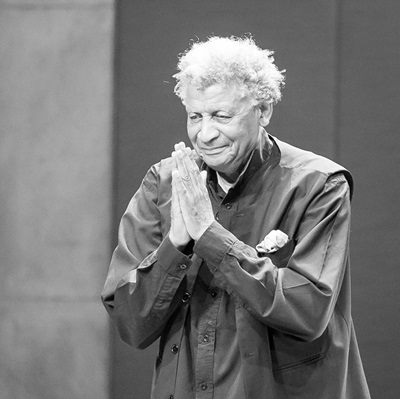
”Analog,” by Susanna Schantz
The Sunday Poem is published weekly, and strives to include the poet reading their work.... Susanna Schantz reads her poem at its conclusion
Click here to read previous editions of The Sunday Poem
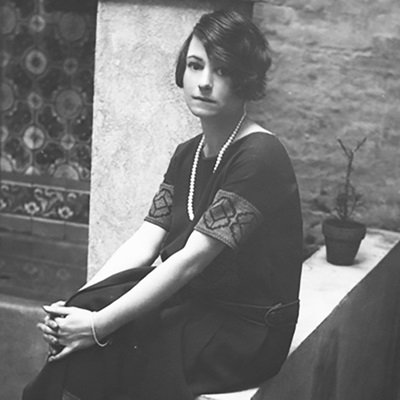




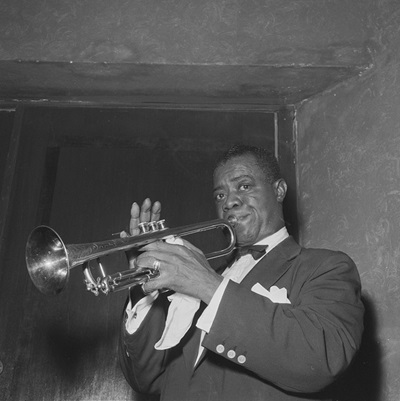
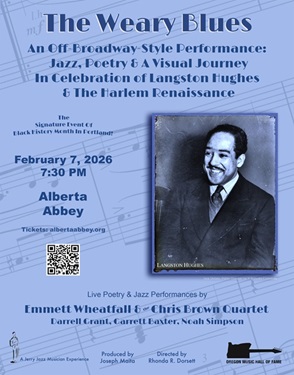

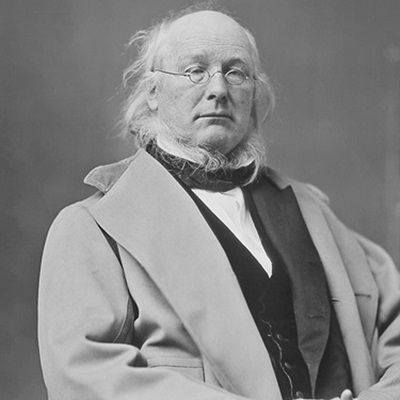
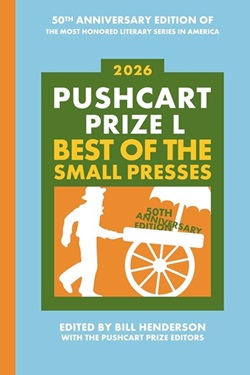


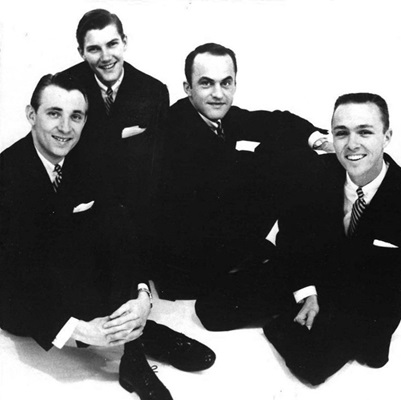









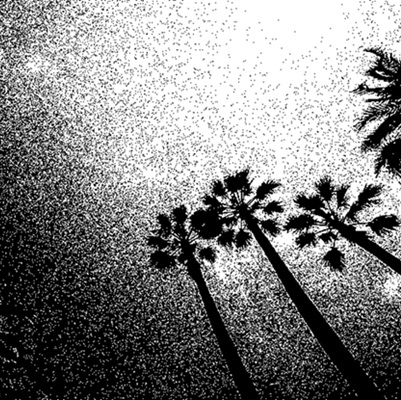













Dear Readers:
I am determined to publish this website commercial free.
If you enjoy Jerry Jazz Musician and want to see it continue, your donation will help me cover the time and expense required for publishing it.
If you’d like to make a contribution, information regarding how to do so is found by clicking here.
To bypass this window and access the content on Jerry Jazz Musician, simply click on the “close” tab.
Thank you!
Joe Maita
Editor/Publisher
,

